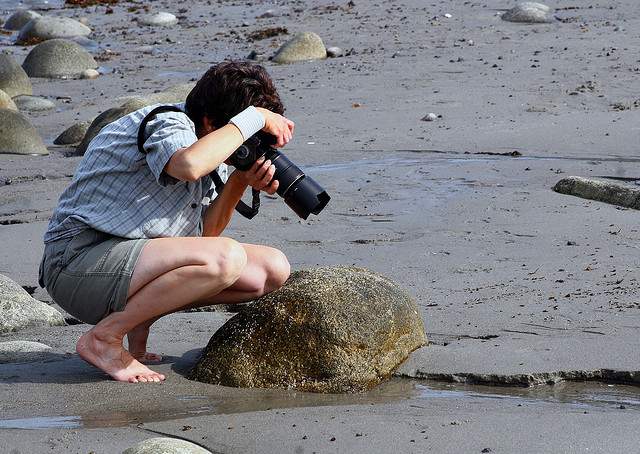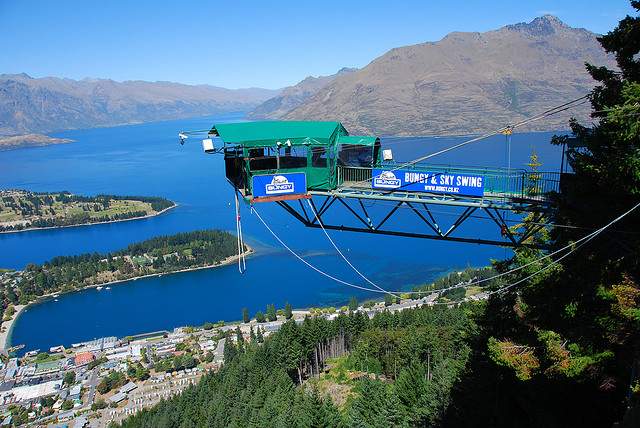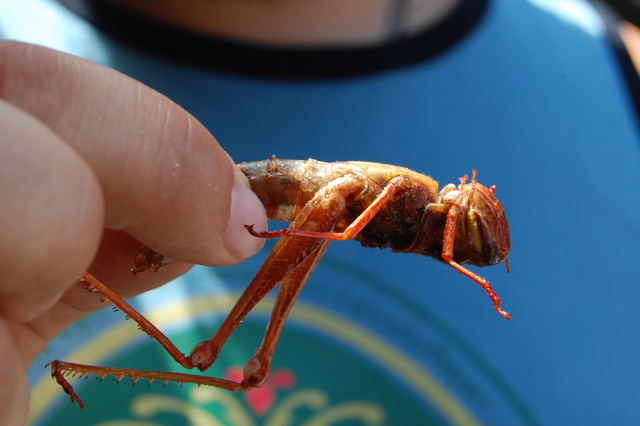When it comes to a medium for sharing your travel experiences, it’s hard to beat blogging—it’s easy, free, visual, verbal, and customizable. It’s also one of the easiest ways to connect with people who are genuinely interested in your experience, either as armchair travelers or as people planning their own adventures. Besides, anyone who has ever tried to share a trip with friends and family will agree that it’s more effective to drip-feed the adventures than to share it in one explosive outburst.
But maybe even more importantly, putting together a really good travel blog will make you a better traveller. Why? Because the process of writing a good travel blog influences the way you understand and interact with places. Here are six tips for writing an awesome travel blog that will also (hopefully) change the way you look at travel.
Read

Read often; read everything. This is partially just a general tip for improving your writing ability. You don’t need to be a poet or a journalist to write a travel blog — welcome to the wonderful, democratic nation of the Internet — but you do need to be coherent. Thus, it does behoove you to take basic spelling and grammar to heart and learn how to write in a way that is clear and effective.
[social]
The best way to hone those writing skills is simply to read. Fiction, non-fiction, newspapers, magazines, novels, poems, blogs. Pay attention to the way other writers use words, punctuation, and paragraphs. When you come across a passage you like, try to figure out what you think makes it stand out. Is it a certain word? Imagery? Humor? Short sentences? A well-placed semi colon? If you read enough, you’ll figure out how to write, and more specifically, how you want to write.
The other benefit to reading a lot is what you learn from it. Even if you’re not reading about your destination (reading relevant literature is highly recommended), there are still lines to be drawn between Michael Pollan’s The Omnivore’s Dilemma and the food you’re eating in Costa Rica, or between Ernest Hemingway’s The Sun Also Rises and the expat culture in Southeast Asia. Let reading turn your head towards new perspectives and ideas. Write about it if you can; even if you don’t, considering the world from a multitude of angles is just a good habit to be in.
Take photos of everything

One of the coolest things about blogging is that it’s a multi-media platform. Take photos, video, and audio recordings and toss it into your prose. Shoot, you can even make the writing part secondary and set up a photo-essay style blog, or record a weekly video. Play to your strengths and interests.
When you take photos for a blog, though, the kind of photos you take while travelling should change slightly. Sure, you’ll still have the same sweeping photos of mountains and lakes, of tropical beaches, and ornate castles. But all of a sudden, squat toilets, stray dogs, and mailboxes become equally important subjects. This change is especially noticeable if you have been living abroad or have been traveling for a long time, and have long since stopped taking a picture of things you have already seen a million times.
But years and year from now, after you’ve gotten tired of looking at that sunset photo of the Eiffel Tower you’ve set as your desktop backdrop, you might find that it’s the unbeautiful photos of weird toilets and street signs that you value the most. Plus these types of photos become important if you write practical type posts for different destinations.
Avoid the shopping list trap

A story, at its essence, is a collection of details. So is a shopping list, but the big difference between a story and a shopping list is the order. If you swap around the items in your shopping list, you still end up with the same bag of groceries. If you mix up the details in a story, you have something completely unrecognisable.
An easy trap to fall into is to write a travel blog like a shopping list: first we went here, then we went here and then we saw this. Try approaching your adventures more like a story with a beginning, middle and an end. What made you interested in this place/activity? What was it like? What did you learn? Not to sound harsh, but unless you’re extremely talented, not many people will be interested in a straight-up narrative story about your trip.
The benefit here is that it changes the way you think about what you’re doing. Why did you want to go bungee jumping in New Zealand? What did you learn after visiting Angkor Wat? You might be surprised at what you come up with once you start to think about it.
Research

Remember how a story is a collection of details? Telling a story is all about deciding what details to include and which to exclude. Most stories include only the details that advance the plot, but travel writing is a little bit different (unless you lead a rather extraordinary life, it probably doesn’t have a straightforward plot). When you write about travel, most of the details earn inclusion simply because of novelty.
That’s why every single travel article you ever read about Vietnam will mention the density of the traffic. Not because traffic is particularly interesting, nor because it’s a pivotal plot point in the narrator’s life story, but because it’s different. It’s new; it’s what makes this place different from that place. It’s what we look for when we travel.
And by all means, write about everything surprising and unexpected. But to turn it into a really effective blog post, dig a little deeper into these new details and think about why they exist here and not there. Why did New Zealand develop as an adventure sport capital in the first place? What sort of effect is temple tourism having on Cambodia’s economy? Your observations are going to be much more interesting and edifying if they’re anchored in an understanding of the local culture, history and economy.
Do it for the story

Remember those kids you went to college with who went to myriad club meetings and volunteer events because it “looks good on a resume?” Whether you respected or resented those people, now is the time to become one. Now is the time to push yourself further—do more, see more, experience more—sometimes only because it looks good on a blog.
If you have ever had a gym buddy, the concept here is the same. The idea is that if you have promised someone else that you’ll be running next to them on the treadmill every Tuesday afternoon, or going to yoga on Saturday mornings, you are a thousand times more likely to actually do it. Just think of your blog readers as your new gym buddies.
There will always be those moments when you’re travelling where you stop and say to yourself “Do I really want to eat that still-beating snake heart?” Often, the answer is “Nah, maybe I’ll do it next time”, even though you know full well that next time will never come. But now you’re accountable to other people—readers—who want to hear about all the great things you’re seeing and doing and eating. And you can’t write about experiences you’ve never had. Even a regrettable experience (like eating snake hearts) is better than never trying anything that scares you.
Practice courtesy, patience, humility and good humor
Often, travel is like a pair of unflattering pants that exposes all the parts of your body you are most self-conscious about. These pants make you look awkward and stupid and sweaty. That’s fine — it’s actually that process of breaking in the pants, finding a way to wear them comfortably, that makes travel so personally rewarding.
When you are mediating your experience, though, it’s very tempting to edit out the awkward, stupid, and sweaty parts. You have the power to blame every misstep and hiccup on something else. It’s possible you got lost because they’ve apparently never heard of urban planning in Hanoi; because no one in New Delhi can give decent directions; because they forgot to put street signs up in Managua. You can totally omit the fact that you left your map at the hotel because you didn’t feel like carrying it. You can, but you shouldn’t.
Writing about travel puts a lot of power in your hands. You are, for the most part, describing and defining a place that your audience may have never been to, and may never see. Your job is to do that fairly, even if your stories do not always depict you in the best light. Practice courtesy, patience, humility and good humor in your writing, just as you should when you’re out and about. The fact is, you cannot write honestly about traveling without those four qualities.
Read the following articles for more about blogging:
- Should You Start a Travel Blog for Your RTW Trip
- Lessons Every Travel Blogger Can Learn from TBEX
- 15 of the Best Expat Blogs
- Best Round the World Travel Blogs
- 15 Best Travel Photo Blogs
- 6 Online Tools to Enrich Your Offline Travel Experiences
Photo credits: phaelog, Muffet, Silveira Neto, robertpaulyoung,

